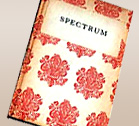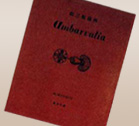English
There is a Junzaburo Nishiwaki memorial hall in this library. The foreign book and the painting and the manuscript, etc. that oneself was owning have been exhibited.
Junsabrou Nishiwaki

Junzaburo Nishiwaki 27th Year Meiji Era - 57th Year Showa Era (1894-1982)]
Poet, Doctor of Literature, Person of Cultural Merit and Ojiya City Honorary Citizen.
Born in Ojiya, he continued to publish numerous literary works until the age of 88, when his place of death becomes Ojiya. He originally aspired to become an artist, but unable to fulfill this dream, he began to pave his path in the world of literature. In addition, he studied in Great Britain, and upon his return, served as professor at numerous Universities, beginning with Keio University.

[Nishiwaki Foreign Book Collection] Junzaburo Nishiwaki's personal collection of western books totaling the amount of 1,200 books in all.
Including the works of Shakespeare, Eliot, Joyce, Pound, Pater, Lawrence, Keats, as well as numerous other works by those in the world of poetry and literature.

A monumental poetry inscription set on the summit of Mount Yamamoto (South Face & North Face)
Introduction of book
Spectrum

1925 (14th Year Taisho Era) Cayme Press Publication (London)
In 1922 (11th Year Taisho Era), Junzaburo Nishiwaki, at the age of 28, as a Keio University student, while in England for the purpose of studying English Literature, Literary Criticism, and linguistic research, released a self-publication of the collection of poetry [Spectrum].
In London, his English poetry was published in the same magazine as the likes of T.S. Eliot. He engaged in friendship with the likes of John Collier, as well as British literary youth, artists, and journalists. He married a British artist, Marjorie Biddle, and returned to Japan.
During his stay in England, Junzaburo Nishiwaki breathed in the air of the British literary world in the height of Modernism, with contemporary poetry, contemporary literature, avant-garde painting and sculpture, which made an unmistakable influence on the birth of Junzaburo Nishiwaki as a poet.
Ambarvalia

1933 (8th Year Showa Era) Shiinoki Publication
This was the first Japanese publication of collected poetry in Japanese by Nishiwaki, in which he received definite appraisal as a poet. It is said that just the first three lines of [Girishateki Jojoushi] and [Tenki] was all it took to receive high reviews.
On a morning that is seemingly (a shattered jewel), some people stand in the doorway as if whispering to another, this is the day of the birth of God.
After this collection of poetry bound in wine-red is published, until his last publication of collected poetry [Jinrui] in 1979 (54th Year Showa Era) at the age of 87, he continued to compose numerous publications of written material including those of collected poetry.
Tabibito Kaerazu

1947 (22nd Year Showa Era) Tokyo Shuppan
After the collection of poetry [Ambarvalia], as the curtains of war become thicker, he swore to silence and discontinued publication of any collected poetry. However, as the fires of war worsen, he fled to his homeland Ojiya, and flourished in Japanese painting, research of Nanga painting (Southern Chinese painting), and indulged in his conception of [Tabibito Kaerazu]. After the war, he returned to Tokyo, and began to write poetry.
Because his writing was so different from his work composed during the beginning of the Showa Era such as [Ambarvalia], considerable interest was born in the world of poetry.
Ambarvalia

1947 (22nd Year Showa Era) Tokyo Shuppan
After the war, he became discontent with the writing style and usage of vocabulary in [Ambarvalia] from the 8th Year of the Showa Era, and published a complete adaptation. Together with [Tabibito Kaerazu], it caused much dispute in the world of poetry.



















